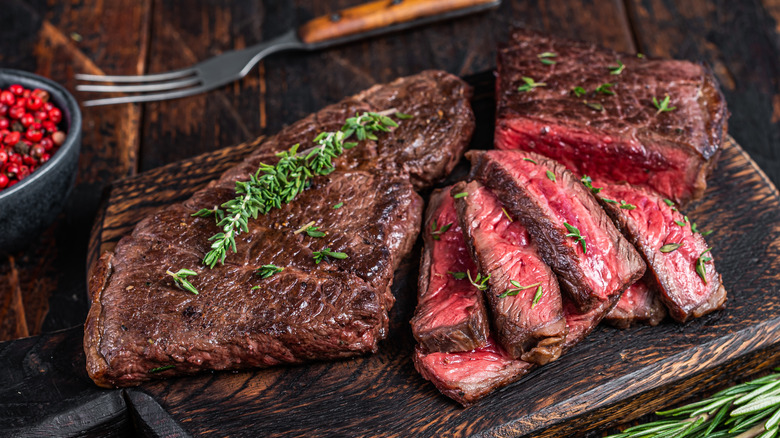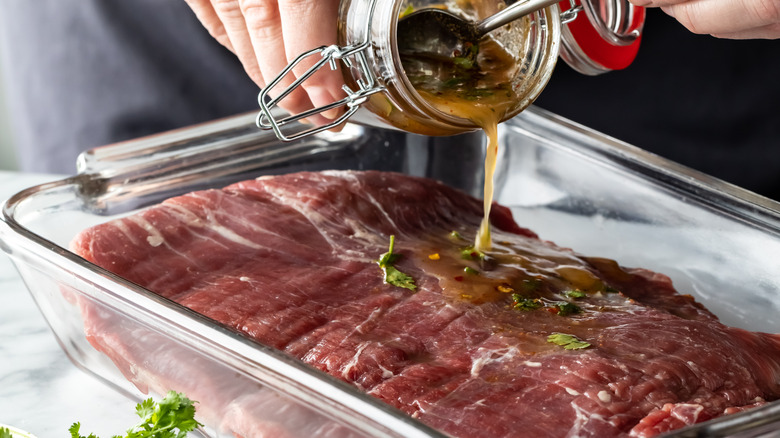The Best Substitute For Skirt Steak, And How To Adjust Your Recipe
Step aside, stew beef and roasts. The sun is shining and spring is here, so it's time to get outdoors and grill. Depending on the country and how your butcher was taught, the types of beef cuts readily available to home cooks will vary from region to region. In the US, butchers break down a cow's carcass into eight primal cuts: chuck, brisket, rib, plate, loin, flank, round, and shank. Those cuts are further broken down into subprimal cuts.
As consumers, it's helpful to learn the different cuts of meat to dictate the best cooking method since the leanness of the cut determines how and for how long you should cook it. Beef chuck, ribs, brisket, round, and shank are tougher cuts and require long, slow cooking to break down the collagen and fat to tenderize the beef. These cuts are primarily used for roasts and stews and can be more economical than steaks.
If you want to capitalize on the warmer weather and grill, the flank, loin, and plate cuts are the best options. The beef loin is further manufactured into familiar steaks, including T-bone, Porterhouse, Delmonico, and New York strip, and the plate can be broken down into skirt and hanger steaks.
Among the grilling meats, skirt steak is an economical cut, appreciated for its beefy flavor. When cooked properly, it can be a tender cut often used for fajitas and tacos. If you can't find that cut, here's what you can use instead.
Substitute with flank steak
Skirt steak is cut from the cow's belly, and it's a flavorful, lean cut smaller than other grilling meat. It is most similar to another "flat steak," flank. Flank steaks can be twice as thick as the skirt, but the two cuts can be used interchangeably in recipes with minor tweaks.
Both skirt and flank steaks benefit from marinating, which imparts flavor and starts to break down the tough fibers. Since marinades penetrate skirt steak quicker, it can be marinated within an hour, whereas flank steaks require a longer marinade, up to 24 hours, in the refrigerator. When it's time to grill, thoroughly dry off the outside of the meat to achieve the Maillard reaction, the caramelization that creates a golden brown crust and gives the meat more flavor.
Skirt and flank steaks should be cooked over direct, high heat, but the skirt steak will cook quicker since it's thinner. To maximize the tenderness in both cuts, avoid overcooking, which will dry out and toughen the meat. Grilled flank steaks should be cooked to no more than medium-rare (130 to 135 degrees), and skirt steaks can go a little further to medium (135 to 140 degrees). Allow the meat to rest for as long as it is cooked before cutting to allow the juices to redistribute. Cut the meat against the grain, keeping in mind that the grain runs differently in the two cuts. The grain of the skirt runs across the steak, while the flank runs the length of the steak.

